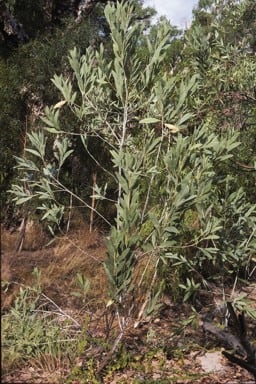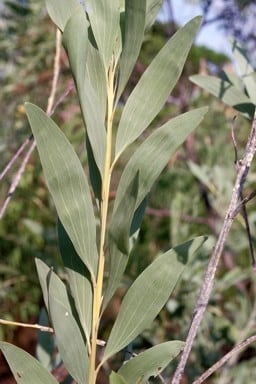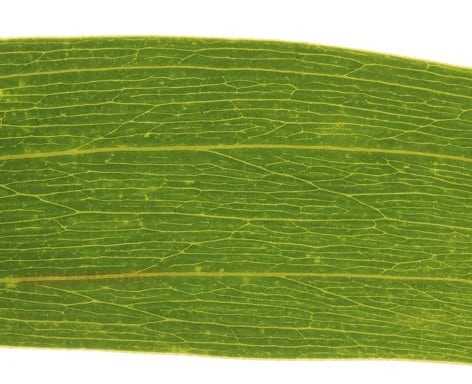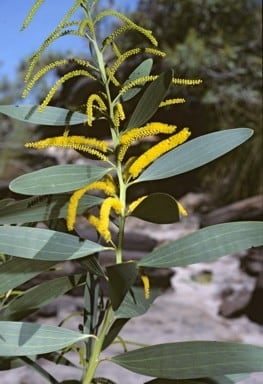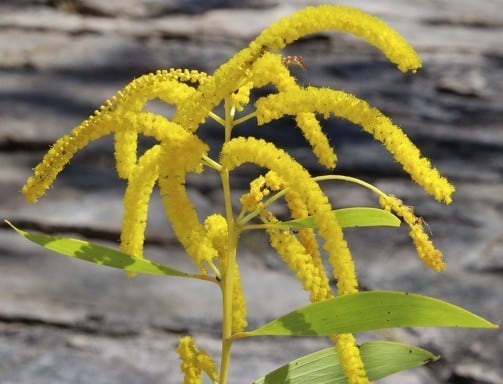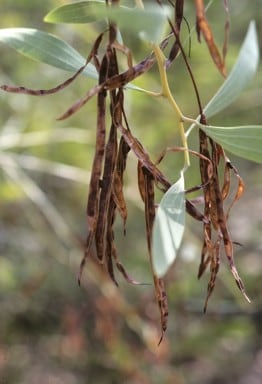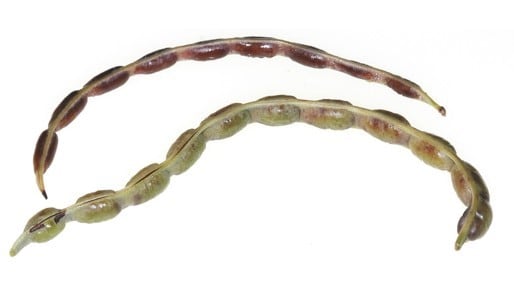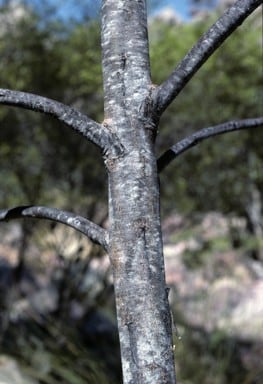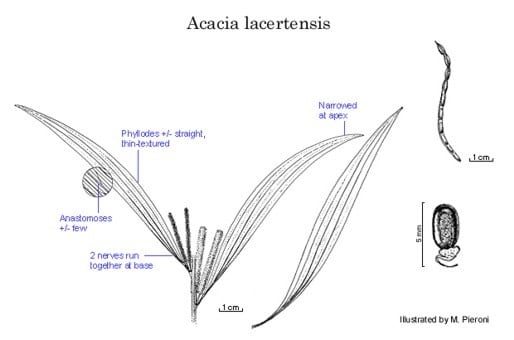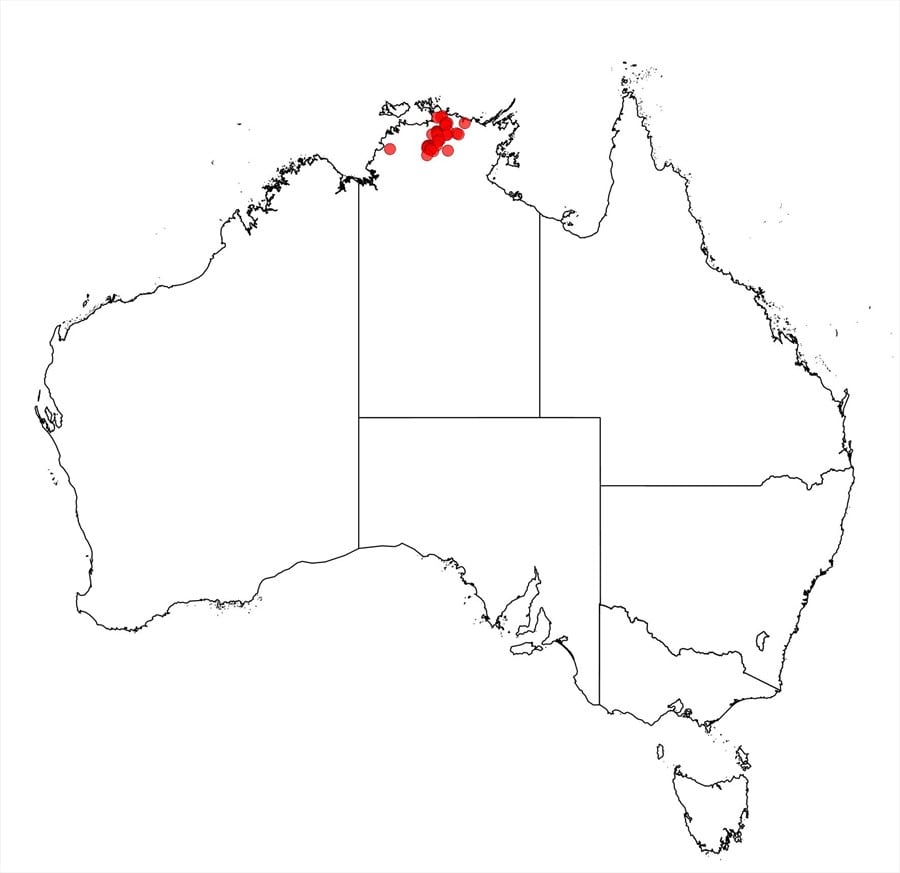Acacia lacertensis Pedley
WATTLE
Acacias of Australia
Family
Fabaceae
Distribution
Occurs in northern N.T. on the western and northern margins of the west Arnhemland sandstone plateau.
Description
Slender shrub or tree with sparse canopy to 8 m tall. Branchlets angular at extremities, sometimes stout (especially on young plants), glabrous, often lightly pruinose. Phyllodes straight or shallowly sigmoid, sometimes shallowly recurved especially near the normally acute apex, narrowed both ends, commonly erect, 10–17 (–22) cm long, 1–2.5 (–3) cm wide, to 4 cm on juvenile plants, glabrous, rather thinly textured; longitudinal nerves numerous, 2 or 3 more prominent than the rest with lowermost pair running together in middle of phyllode at base, minor nerves widely spaced (3–4 per mm) and longitudinally anastomosing in between; gland 1–5 mm above pulvinus; pulvinus 3–7 mm long. Inflorescences simple or on rudimentary racemes to c. 1.5 mm long, 4–6.5 cm long, ±loosely flowered, golden; peduncles 5–10 mm long, glabrous. Flowers 5-merous; calyx 0.4–0.5 mm long, broadly cupular, lobed to about middle, glabrous or fimbriate; ovary sparsely sericeous. Pods linear, ±straight, 8–9 cm long, 3–4 mm wide; convex over seeds, glabrous, with prominent marginal nerves. Seeds longitudinal, oblong, 3.8–4.5 mm long, 1.7–2.3 mm wide; aril terminal, cupular.
Phenology
Flowers June–July; fruits collected Sept.
Habitat
Grows on sandy banks of watercourses.
Specimens
N.T.: East Alligator R., N.B.Byrnes 2751 (BRI, DNA); Narbalek, Cooper Ck, R.Hinz 597 (BRI); Cooper Ck, 45 km N of Oenpelli, G.Chippendale NT8094 (BRI, DNA), 17.8 km along turnoff to Murgenella, Cooper Ck, M.McDonald MM413 (BRI).
Notes
Acacia lacertensis is closely related to A. tropica. The most obvious differences between them are the texture of the phyllodes and the prominence of the nerves, fide L.Pedley, Austrobaileya 5(2): 317 (1999). In N.T. A. tropica occurs in the Gulf country (and on Groote Is.), c. 500 km SE of where A. lacertensis is found and is recognized by its phyllodes that are rather abruptly narrowed to obtuse apices.
FOA Reference
Data derived from Flora of Australia Volumes 11A (2001), 11B (2001) and 12 (1998), products of ABRS, ©Commonwealth of Australia
Author
L.Pedley
Edited by B.R.Maslin
This identification key and fact sheets are available as a mobile application:
URL: https://apps.lucidcentral.org/wattle/
© Copyright 2018. All rights reserved.
